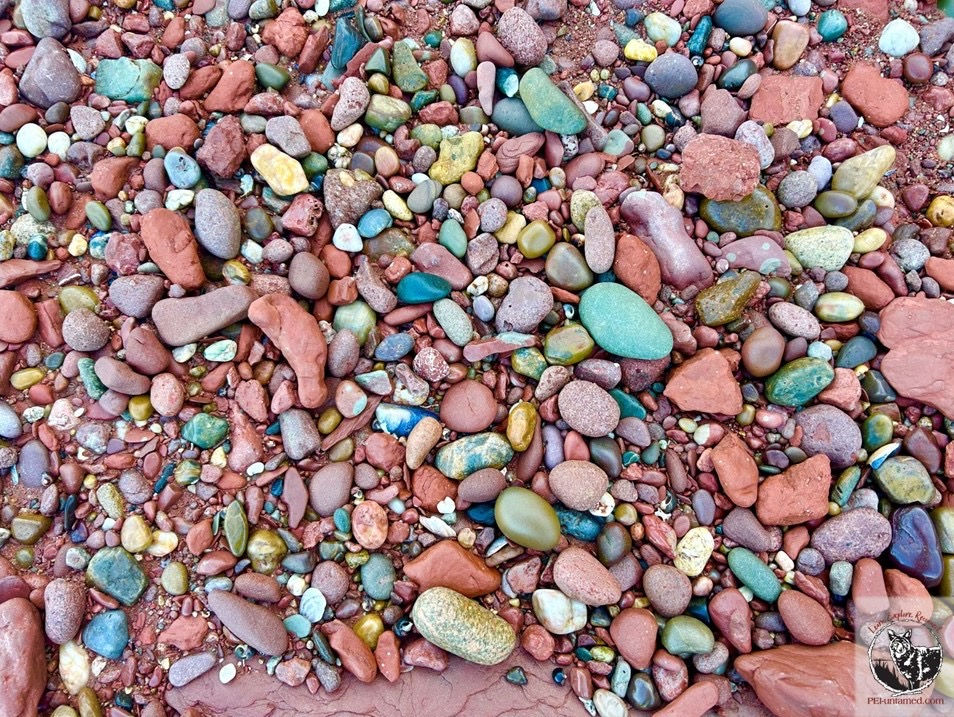Sand Ripples
- katemacquarrie22
- Aug 21, 2024
- 2 min read
Few things say PEI more than the expanses of red, ripple-marked sand on our shores at low tide. One of my favourite things about those ripples is how they connect us to the ancient past: the same physical processes have been leaving these marks in our sediment for hundreds of millions of years!

Features created by the interactions of wind or water and sediment are called ‘bedforms’, and they can tell us a lot about the environment in which they were made. If you look closely at the modern-day intertidal ripples in Photo 1, you’ll notice they are asymmetrical: gently sloped on the left-hand side with a steep drop-off on the right. This tells us the water was moving from left to right.
Water carries sand grains along with it, and the faster it moves the more it can carry. When a current encounters an obstacle – like a sand ripple – it speeds up, picking up more sand from that side (the ‘windward’ side on land, underwater it’s called the ‘stoss’ side). Sand is carried up the slope until the water crosses over the crest and slows down again, dropping the sand grains out and creating a steeper lee side. This gives the ripples a characteristic shape and causes them to slowly march in the same direction as the waterflow.
You’ll also notice the ripples in Photo 1 are flat-topped rather than peaked. That’s indicative of tidal action: in this case, the ripples were formed by water moving toward the land, and the peaks were flattened by the outgoing tide carrying some of the sediment back out to sea.
The Island’s sandstone bedrock was formed about 300 million years ago, when ancient waters eroded the Appalachian Mountains and carried sediments across the landscape. In some cases, ripples were created in the sediments, just like they are today. If water levels dropped suddenly or floodwaters deposited large amounts of finer sediments on top of the ripples, they could be preserved and lithified – turned to stone over millions of years.

The lithified ripples in Photo 1 were formed under water flowing in one direction (I’ve placed the stone so that stoss and lee sides are the same as in the fresh sediment), and the sharp crests tell us it likely wasn’t under tidal influence. The size of ripples and spacing between them is proportional to the depth of water in which they were formed. The preserved ripples in Photo 2 were formed under deeper water than those in Photo 3. The green-grey colour is because the sediments are unoxidized: the iron in them was not exposed to air and so did not rust. This suggests they may have been preserved under floodwater-carried silt, rather than dropping water level as could be the case with the example in Photo 1.

Bedforms are endlessly fascinating, and their complexity far exceeds my limited knowledge. The physics and geology that govern them can be seen from PEI shores to African deserts to the surface of Mars. Sand ripples – both modern and prehistoric – are wonderful parts of PEI untamed!



